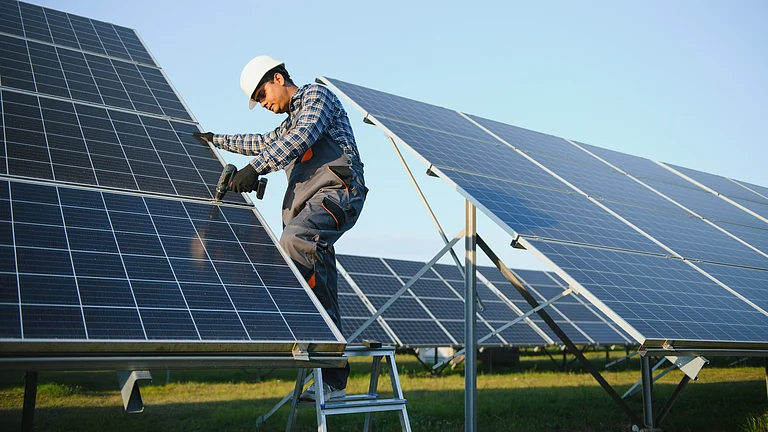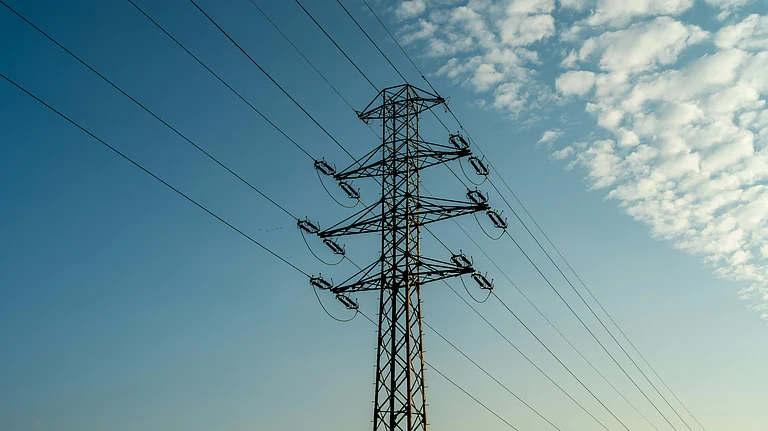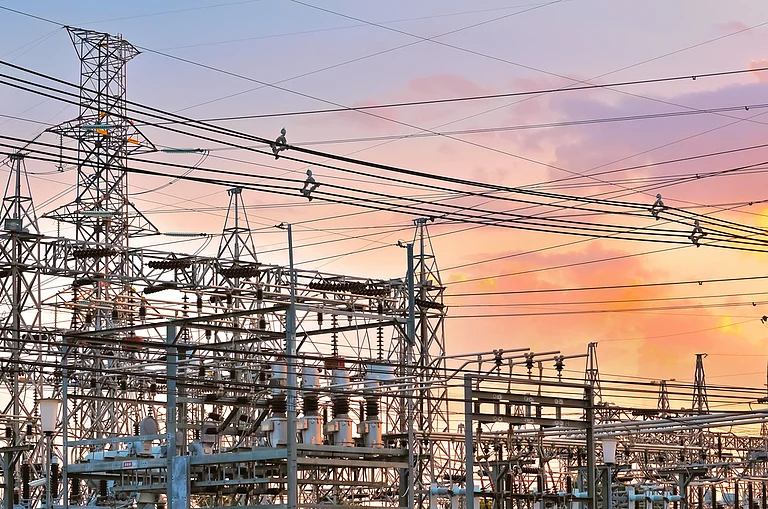A surplus monsoon rain and high base effect led to a modest rise in power sector demand growth in India in the financial year 2024-25 (FY25). The sector, which saw a 7.8% year-on-year electricity demand growth in FY24, had to sustain with just 3% more power demand last year.
According to Kotak Institutional Equities, distorted weather patterns were behind this lag in power demand.
"While FY2025 started on a stronger note with a severe heat wave (+7.5% yoy growth in 1QFY25), this was followed by a surplus monsoon, leading to (-)0.7% yoy growth in power demand in 2QFY25, even as 2HFY25 saw some recovery at 2.8% yoy," the brokerage wrote in a note on June 3.
They further cautioned that FY26 has also started on a "soft note," due to unseasonal rains across the country. This has led to flat rise in power demand in April and May this year, two months which usually see peak power consumption in India due to heatwaves.
Power Price Hit Zero
However, this year, reports say spot power prices in India dropped 25% year-on-year in May, briefly hitting zero on May 25, due to unseasonal rains that cooled temperatures and slashed demand for air conditioning. According to a report by MoneyControl, peak demand stayed well below projections — 231 GW against an expected 266 GW — while overall power consumption fell 4% YoY. Real-time market prices averaged just Rs 0.56/unit at times, with a daily average of Rs 1.53/unit. Discoms shifted to cheaper renewables, boosting exchange volumes.
The Ministry of Power is reportedly now reassessing summer demand forecasts, which had estimated peak load to hit about 270 GW amid concerns over critical summer months.
In May 2025, North India experienced significant unseasonal rainfall, deviating from typical weather patterns. According to the India Meteorological Department (IMD), Delhi recorded 186.4 mm of rainfall, surpassing the previous high of 165 mm set in 2008, and far exceeding the average of 30.7 mm. The met office attributed this anomaly to an unusual combination of early monsoon winds and frequent western disturbances.
Typically, May in North India is characterised by heatwaves, but this year, the early onset of the southwest monsoon and multiple western disturbances led to record-breaking wet conditions. Reports say some meteorologists have expressed concern over these extreme variations, viewing them as indicative of broader climatic changes impacting regional weather patterns.
Shift in Peak Demand Months
The annual peak demand, the highest amount of electricity usage, rose to 250 GW in FY25, registering a year-on-year growth of just 3%, a significant moderation from the 16% jump seen in FY24. The slowdown was particularly stark in months like August (which saw a 10.2% contraction), September (down 4.9%), and October (which fell 1.3%).
The highest peak demand came in the months of May (250 GW) and June (245 GW) driven by intense heatwaves and rising cooling needs, pushing peak power load earlier into the fiscal year.
However, just a year earlier, in FY24, the highest monthly peak power demand occurred in September, when the country recorded 243 GW, closely followed by August (241 GW) due to late monsoon peak.
In FY25, the western and southern regions recorded subdued power demand growth due to surplus monsoon rains. Maharashtra and Andhra Pradesh saw declines of 1.8% and 1.6%, respectively, while Karnataka’s demand remained flat. In contrast, demand surged in eastern states, with Bihar and West Bengal rising over 11% and 14%, respectively. Northern states also posted steady gains, led by Uttar Pradesh at 7.9%.
India Still Adding Power Capacity
Kotak analysts still remain bullish on the sector, calling these weather-caused anomalies "short-term."
"The power demand in India is closely linked to GDP growth, leading us to maintain our 5.6% CAGR estimate in power demand over FY2025-30E," the report noted. India added 33 GW of new power capacity in FY25, mostly from renewable sources (28.7 GW), along with 4.2 GW of coal and 0.8 GW of hydro. This marks an improvement from 26 GW added in FY24 and is much higher than the 15 GW average over the past six years.
While 34 GW of coal projects are under construction and expected over the next 6–7 years, the brokerage said that "(Power Industry) would need to further accelerate the pace of renewable capacity addition to sustain the 5-6% demand CAGR."
However, most utility companies under Kotak's coverage underperformed on their capacity addition targets in FY25. NTPC added 4 GW, including 2 GW through acquisition, falling short of its 6 GW guidance. JSW Energy added 3.6 GW, half of which came from acquiring KSK Mahanadi. NHPC failed to commission any new capacity, missing its 1.5 GW target, though it later commissioned the Parbati III project in April 2025.
Other players like Tata Power and ACME Solar saw benefits from distribution operations and Q4 additions, but didn’t report major capacity growth for the full year. Power Grid also missed its capitalisation guidance, and CESC showed flat performance, the brokerage noted.
Weak Earnings
The brokerage noted that earnings growth for listed utilities disappointed on account of execution slippages in the commissioning of new capacities and lower merchant tariffs for companies such as JSW Energy. Although some of this was "cushioned by non-recurring incomes and/or favorable tariff orders."
NTPC reported a standalone profit after tax (PAT) of Rs 58 billion in 4QFY25, up 22% yoy, driven by regulatory earnings and deferred tax benefits. Its adjusted PAT was Rs 50 billion, slightly down yoy, with standalone core ROE at 15.3%. The state-owned giant renewable arm NTPC Green’s revenue grew 22% yoy, with PAT surging 188% in 4Q.
Power Grid’s 4QFY25 PAT was Rs 41.4 billion, marginally down yoy, affected by JV losses and weak capitalisation. NHPC posted strong 4QFY25 PAT growth of 28% due to finance cost reversal and lower tax rates. For FY2025, NHPC’s standalone PAT declined 18% to Rs 30.8 billion, impacted by employee arrears charges, disputed contractor claims, and a higher tax rate. It has 19 GW of projects underway, including 9.9 GW under construction, with Parbati II (800 MW) commissioned in April 2025 and Subansiri Lower expected operational by FY2027.
Among private players, Tata Power’s 4QFY25 consolidated revenue rose 7% yoy to Rs 173 billion, with PAT up 20% yoy at Rs 10.2 billion, boosted by Odisha discoms and solar manufacturing. JSW Energy reported 4QFY25 PAT of Rs 4.1 billion (up 16% yoy), aided by the KSK acquisition.
CESC’s 4QFY25 PAT was Rs 3.7 billion (down 7% yoy), with mixed business performances. ACME Solar posted strong growth with 4QFY25 revenue of Rs 4.87 billion (+65% yoy) and PAT of Rs 1.4 billion, recovering from a prior loss.



































